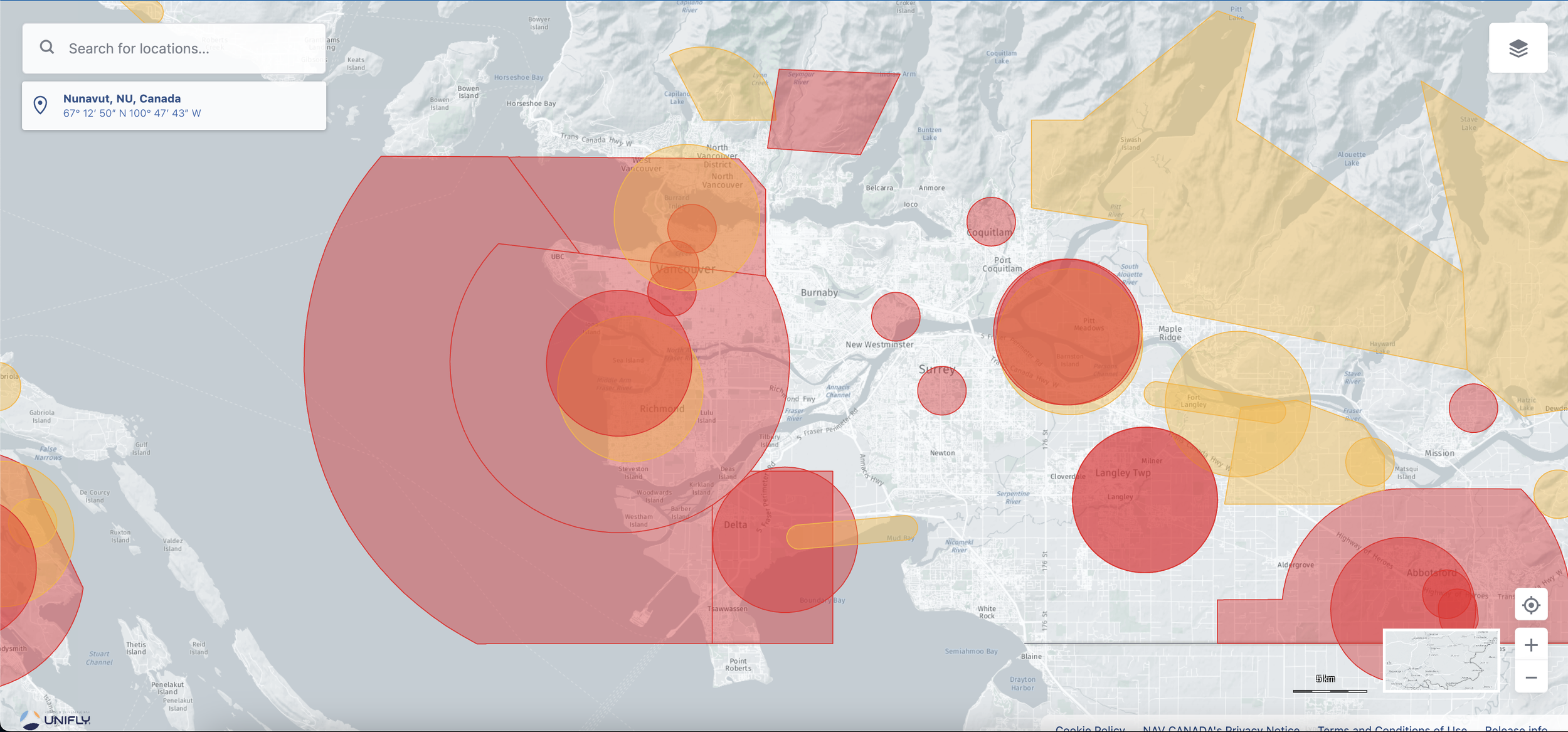Where Can I Fly With a Basic Drone License in Canada?
Why does Transport Canada restrict basic certificate holders?
In essence, Transport Canada are the masters of risk management when it comes to all things airborne. As for drones, Transport Canada has a rather sophisticated system, as well as it's largely based on the drone's weight and it’s proximity to humans and aircraft.
Weight plays a crucial role because a heavier drone translates to greater potential damage should things not go as planned. If your drone is flying close to people, it obviously amplifies the risk. As for aircraft, the rationale is similar – they carry people, and if a drone somehow manages to interfere with an aircraft, we're looking at a significantly escalated problem.
Drones that weigh less than 250 grams are considered to be in the lower-risk zone. Their potential for damage doesn't quite hit the level that requires registration with Transport Canada. So these drones will not be directly referred to in this post, and may have different regulations.
What Can I Do With a Basic Certificate?
With a Basic drone certificate you can:
Fly in uncontrolled airspace;
Fly more than 30 meters horizontally from bystanders.
Fly more than 3 nautical miles from a certified airport.
Fly more than 1 nautical mile from a certified heliport.
But this is not always the case! There are exceptions to these rules in areas with high airport usage. These areas typically need to designate larger no-fly zones for Basic drone pilots. This is because these airports tend to handle larger or a greater number of aircraft, and consequently require more airspace for piloted aircraft to maneuver safely.
Flying Near People
We’ve talked about where you cannot fly due to airports, but what about the way more common obstacle of people? One of the basic certificate restrictions is staying 30m (100 feet) away horizontally from bystanders. This essentially means that people will be a much bigger obstacle than airports in day to day flying. Every person in Canada is surrounded by a 100 foot radius cylinder that a basic certificate holder cannot fly in. When looking at this image, you can see that Basic License holders are restricted to being at least 30m away, whereas Advanced License holders can be 5m away, or even over people if they have a correctly certified drone that allows it, which can be found here. Under the Controlled airspace / Near People / Over People Table.
Advanced+ (Orange): Restricted to Advanced License holders with drones with certain specifications.
Advanced License (Yellow): Permitted to fly as close to 5m away from a bystander.
Basic License (Blue): Basic License Holders are required to stay at least 30m away from bystanders.
So How Do I Know Where I Can Fly?
In order to find the most accurate and up to date information you can use Drone Flight Planning Maps like Transport Canada's Drone Site Selection Tool, or NAVCanada.
When you launch either tool, you're greeted with a default map that quickly highlights where your Basic certificate allows you to fly. But beware of the many red zones! These are no fly areas for basic RPAS license holders.
Here is a map of Canada, including every single restricted area for basic license holders. As you can see, there are many open areas that you could fly in. Although, many of the major cities have red or yellow in or around them. Lets take a closer look!
Map of Canada’s Aerodromes.
Vancouver International Airport (YVR)
From this photo of the Vancouver International Airport, it can be seen that the restricted area spans past the usual 3 nautical miles from the centre of an aerodrome. This is because the rules can differ based on your geographic location. Since YVR is so busy and has many surrounding airports YVR’s aerospace expands additionally outwards.
Victoria International Airport (YYJ)
In this photo of Victoria there are 2 different aerodromes covering a large amount of the area, giving basic certificate holders a very narrow area in which they could fly in Victoria.
Kamloops International Airport (YKA)
Kamloops has a basic aerodrome layout in comparison to Vancouver and Victoria. With just one airport and one heliport its surrounding area is left widely open for basic certificate holders to fly in!
In conclusion, flying with a basic certificate will take some extra planning and thought before you take off! We’ve covered how to avoid airports and heliports as well as the rules surrounding bystanders. If you’d like to unlock more possibilities for your drone flights we suggest looking into our Advanced Drone Training Course so that you can fly in more areas!
As always, Happy flying!
- FlySmart Team





